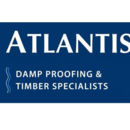Hygroscopic Salts
[edit] What are hygroscopic salts?
In order to understand the nature of hygroscopic salts, we must first look at the term ‘hygroscopic’ which means to absorb water from the air. Therefore, a substance which is hygroscopic is one which is able to consistently attract water from its surroundings via adsorption or absorption. There are many examples in nature of hygroscopic materials but one of the most commonly known is honey as it is primarily a sugar. Sugar is hygroscopic and in its natural state contains very little water but if the surrounding environment contains moisture it will absorb it.
Salt, like sugar, is also hygroscopic in nature and many salts such as calcium chloride and sodium hydroxide are so hygroscopic that they will dissolve in the water they absorb. Hygroscopic materials also have a tendency to over time become damp and soft when exposed to air that contains a lot of moisture. As such, the level of moisture held by these hydroscopic salts is usually proportional to the level of humidity.
[edit] Hygroscopic materials In walls
These hydroscopic materials can however lead to a number of problems, particularly in composite materials such as walls. Dampness in walls can arise from a number of problems, most notably as a result of inadequate ground and surface drainage, but it can also be as a result of cracks in foundations, saturated ground- the list goes on. But, when the soluble salts within the walls become concentrated where the water has evaporated from the wall there will be a ‘tide mark’. This line across the wall is not simply an indication that moisture is working its way up through the capillaries of the wall’s building materials. It is in fact a signifier that dampness in the wall has already evaporated to the surface.
In these instances, hygroscopic salts can have a detrimental impact on the very foundations of your home and will continue to wreak havoc, creating tide marks and dampening wall plaster. Wall plaster in any home with hygroscopic salts which are saturated is at risk of being internally and externally dampened. The first step in addressing this issue is to locate the source of the moisture and rectify the problem. Once this has occurred the damage can be assessed and in most cases, it is advisable to re-plaster the affected walls.
Even if the source of the moisture is dealt with, the hygroscopic salts are likely to have retained water and will continue to give the ‘tide’ damp wall appearance. Often, the appearance of the dampness will come and go depending on how dry or humid the air is that day. It is for this reason that the recommendation will always be to freshly plaster as a ‘salt retardant’ additive can be incorporated. This helps to ensure any remaining moisture is unable to evaporate and settle on the plaster surface.
To ensure that any saturated hygroscopic salts found in walls are sufficiently sealed and walls are damp-proofed it is always advisable to use a certified damp-proof specialist who can provide the correct advice and solutions for properties.
--AtlantisDamp 14:19, 25 Jun 2019 (BST)
[edit] Related articles on Designing Buildings Wiki
- Building damp-free cavity walls.
- Cold bridge.
- Condensation.
- Damp-proof course.
- Damp proof membrane.
- Damp proofing.
- Dew point.
- Diagnosing the causes of dampness (GR 5 revised).
- Dry rot fungus.
- Efflorescence.
- Humidity.
- Hygroscopic.
- Interstitial condensation.
- Moisture.
- Penetrating damp.
- Rising damp.
- Rising damp in walls - diagnosis and treatment (DG 245).
- Spalling.
- Stain.
- Structural waterproofing consultant.
- Tanking.
- Understanding dampness.
- Wall insulation and moisture risk.
- Water vapour.
Featured articles and news
RTPI leader to become new CIOB Chief Executive Officer
Dr Victoria Hills MRTPI, FICE to take over after Caroline Gumble’s departure.
Social and affordable housing, a long term plan for delivery
The “Delivering a Decade of Renewal for Social and Affordable Housing” strategy sets out future path.
A change to adoptive architecture
Effects of global weather warming on architectural detailing, material choice and human interaction.
The proposed publicly owned and backed subsidiary of Homes England, to facilitate new homes.
How big is the problem and what can we do to mitigate the effects?
Overheating guidance and tools for building designers
A number of cool guides to help with the heat.
The UK's Modern Industrial Strategy: A 10 year plan
Previous consultation criticism, current key elements and general support with some persisting reservations.
Building Safety Regulator reforms
New roles, new staff and a new fast track service pave the way for a single construction regulator.
Architectural Technologist CPDs and Communications
CIAT CPD… and how you can do it!
Cooling centres and cool spaces
Managing extreme heat in cities by directing the public to places for heat stress relief and water sources.
Winter gardens: A brief history and warm variations
Extending the season with glass in different forms and terms.
Restoring Great Yarmouth's Winter Gardens
Transforming one of the least sustainable constructions imaginable.
Construction Skills Mission Board launch sector drive
Newly formed government and industry collaboration set strategy for recruiting an additional 100,000 construction workers a year.
New Architects Code comes into effect in September 2025
ARB Architects Code of Conduct and Practice available with ongoing consultation regarding guidance.
Welsh Skills Body (Medr) launches ambitious plan
The new skills body brings together funding and regulation of tertiary education and research for the devolved nation.
Paul Gandy FCIOB announced as next CIOB President
Former Tilbury Douglas CEO takes helm.
UK Infrastructure: A 10 Year Strategy. In brief with reactions
With the National Infrastructure and Service Transformation Authority (NISTA).























